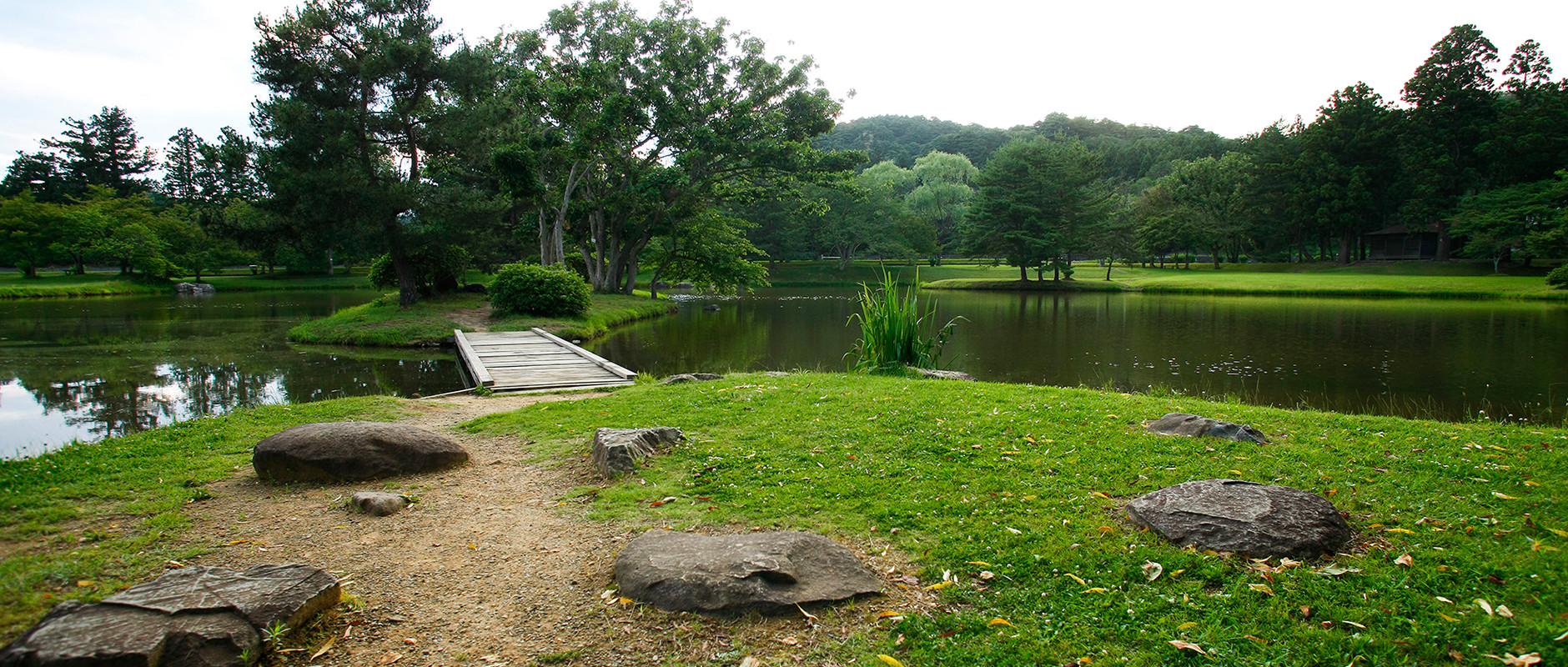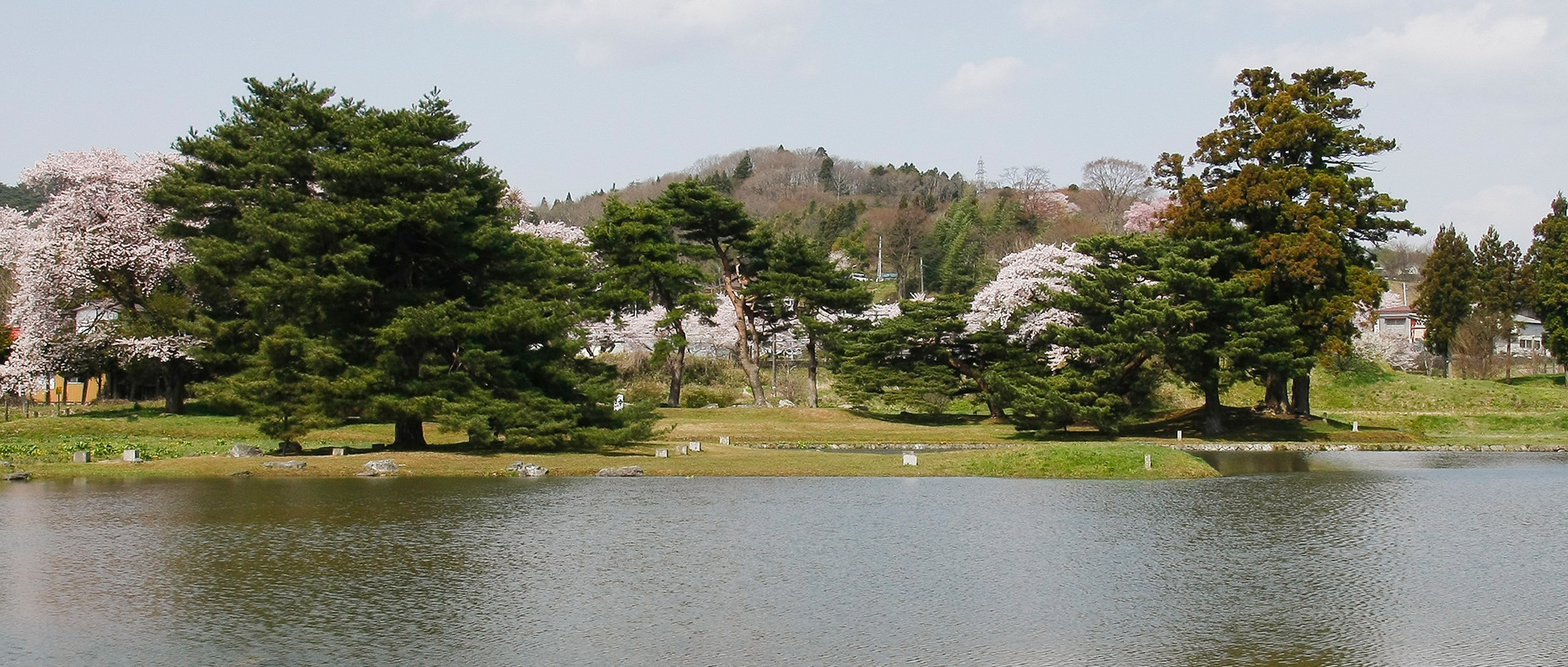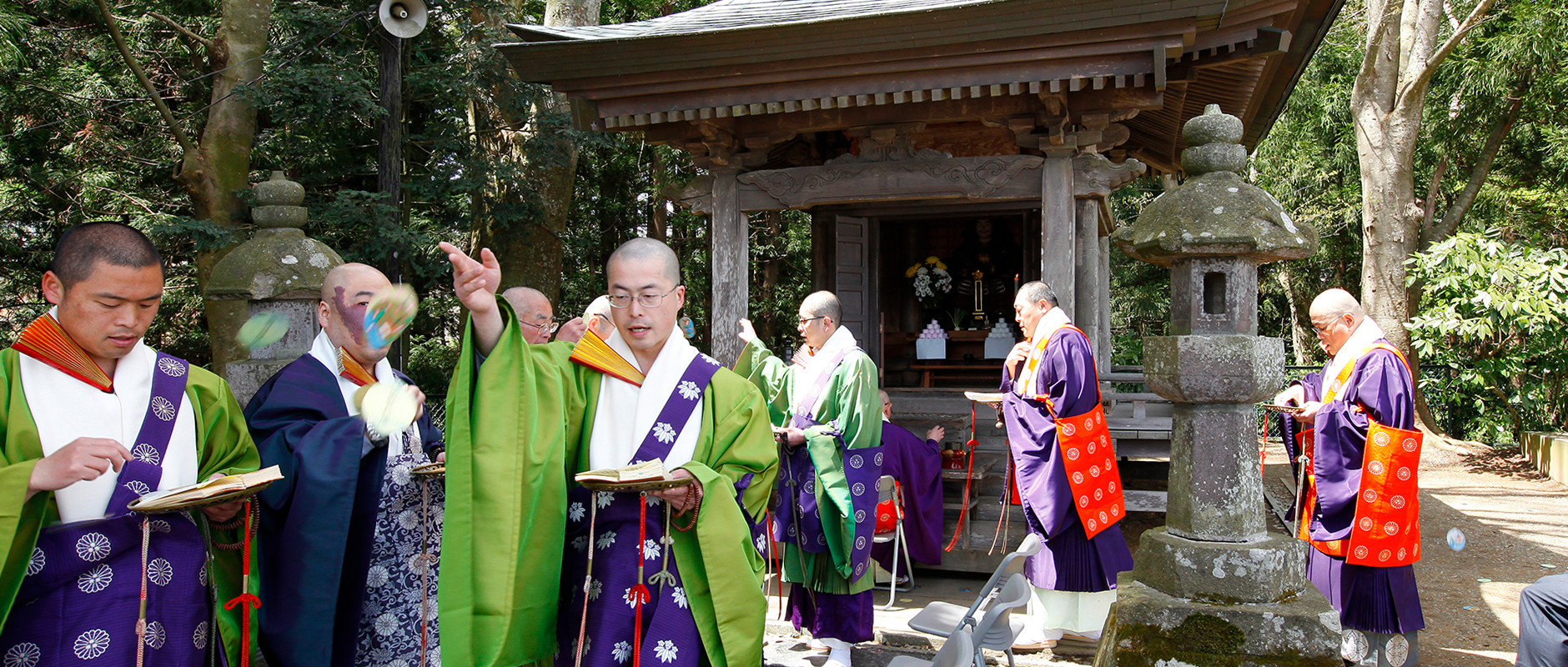Related Historic Sites
Kanjizaioin Temple Site

Commissioned by the wife of Fujiwara no Motohira (second lord of Hiraizumi), the Kanjizaioin Temple Site has been selected as a national Special Historic Site. Kanjizaioin Temple was originally composed of one small and one large Amida hall. The Large Amida Hall housed an Amida triad consisting of the Amida Buddha and two bodhisattvas, Kannon and Shisei. The four walls were covered with murals depicting scenes of the capital at Kyoto, the dais was silver, and the balustrade was burnished gold. It clearly reflected the lavish tastes of Motohira's wife. Excavations have revealed that the temple was 120m east-west and 240m north-south, forming a well-proportioned rectangle. Entering through the southern gate, worshipers saw the pond called Maizuru ga Ike, which has now been restored. The small lake is roughly square, about 90m on each side. There is a small island slightly south of the center, and the rock formation on the west side elegantly expresses a rocky coastline. Water flowed into the pond like a waterfall from an arrangement of large river stones to the north. All of this shows that Maizuru ga Ike was constructed according to the rules set out by Japan's Heian era (794-1192) gardening classic, Sakuteiki ("Treatise on Garden Making"). While small, this was clearly a first-rate Heian Pure Land garden.
Sadly, Kanjizaioin Temple was consumed by fire that sprung from armed conflict in 1573. The only building that remains is a reconstruction of the Large Amida Hall from the early 1700s. However, the Pure Land garden centered on Maizuru ga Ike Pond was miraculously almost completely preserved underground, and has been restored as a historic park.
Muryokoin Temple Site

Muryokoin Temple was commissioned and built by Fujiwara no Hidehira, the third lord of Hiraizumi. It is recorded in the official history of the Kamakura Shogunate, Azuma Kagami, that the temple was also known as the New Hall. This was to distinguish it from Motsuji, the older temple, and indicates that Muryokoin was a subsidiary of Motsuji. Hidehira himself painted the hunting scenes in the murals covering Muryokoin's interior walls. These paintings were an illustration of the meaning of the Visualization Sutra. The principal image here was the Amida Buddha. There was also a three-story treasure pagoda (stupa) on the grounds. In its entirety, from the interior ornamentation to the orientation of the buildings and the topography itself, this temple was modeled on the famous Byodoin Temple at Uji, outside of Kyoto. However, the central island in the pond and the tiling in front of the central hall are departures from the design of Byodoin. Excavations have shown that the temple grounds were 240m east-west and 270m north-south, with a total land area of 6.5ha. This makes it somewhat larger than Motsuji. The garden is a prototypical Pure Land garden like those of Motsuji and Kanjizaioin, and borrows Mt. Tabashineyama as its mountain scenery and Nekoma ga Fuchi as its river in the same way that Byodoin used Mt. Asahiyama and the Ujigawa River. The east-facing temple buildings and garden looking west toward Mt. Kinkei must have been exceptionally beautiful.
Takadachi Gikeido Hall

Takadachi is the name of a hill overlooking the Kitakami River. It runs along the old national road, alongside the Muryokoin Temple Site, east of Chusonji Temple. Also referred to as Hangandate, it is one of the greatest scenic sites in Hiraizumi. The hill has an elevation of 66m, and extends 530m in length and 200m in width, running in a northwesterly direction. The view north from the hill encompasses a paddy field zone that opens onto the confluence point of the Kitakami River and Koromogawa River. To the east is a sheer cliff, below which flows the Kitakami River. Mt. Tabashineyama can be seen on the opposite shore. Gikeido (literally, "Yoshitsune Hall") was built in 1683 at the top of Takadachi by Date Tsunamura, the fourth lord of the Sendai clan. It was here that Yoshitsune committed suicide. The current hall was rebuilt in 1808, but inside the hall is a statue of Yoshitsune in an armor and helmet, said to have been created during the Hōreki era (1751-1763). Interesting features of the statue are that the head and helmet were created separately, the statue has a topknot, and there is clothing on top of the armor. In 1986, a memorial steeple to Yoshitsune and his servant Benkei, called Hokyo Into, was erected to mark the 800th anniversary of Yoshitsune's death.